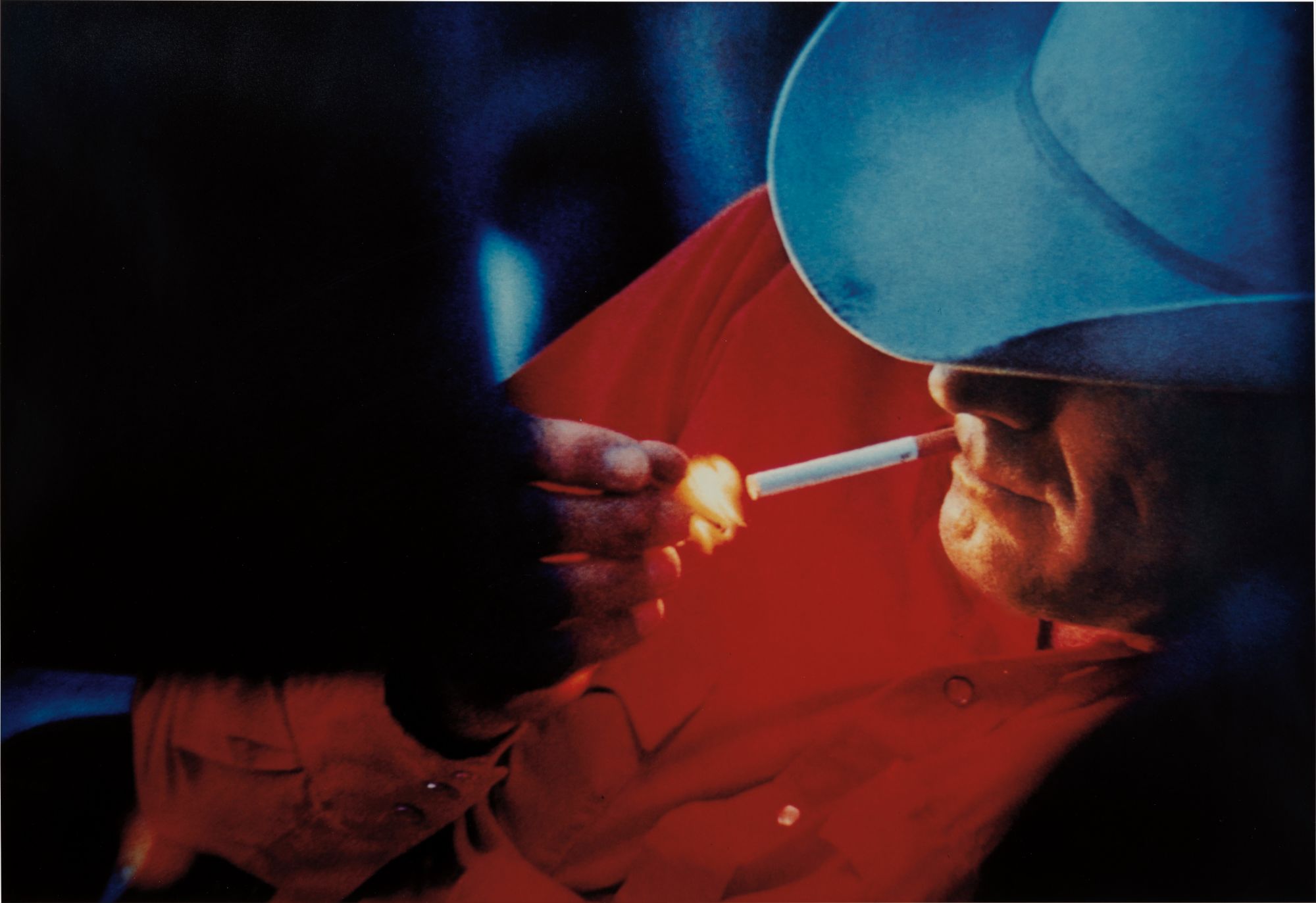

3
Richard Prince
Untitled (Cowboy)
sheet 50.7 x 61 cm (20 x 24 in.)
Full-Cataloguing
In 1954, following Life magazine’s 1949 feature ‘Texas Cowboy’, advertising agent Leo Burnett launched his ‘Marlboro Man’ campaign; the cowboy became the figurehead for Marlboro’s cigarette commercials and generated the visual material from which Prince would create his controversial cowboy series. Working in the tear sheets department at Time magazine in the 1970s, at the end of each day, having clipped all articles, Prince was left with nothing but adverts. The ubiquitous nature of these flawless images against the backdrop of race riots, assassinations and the Vietnam War fascinated and repulsed the artist. Through the zoomed viewfinder of his 35 mm camera Prince became the director of the image by re-photographing, cropping and re-contextualising advertisements to expose their artifice. Re-focusing his preoccupation with consumer driven adverts for watches, pens, bags and clothes, the artist began photographing Marlboro’s cowboy adverts in the 1980s.
Placing the figure of the cowboy at its very centre, the composition of Untitled (Cowboy) brings us closer to the man behind the campaign and removes the previously commercial focus of the imagery. The glow emanating from the heart of the work seduces the onlooker, invoking the familiarity of the cowboy and American folklore. Presented in a solitary setting at the focal point of the work, Prince highlights the paradoxical nature of the material; the rural icon embodies solitude and self-reliance, totally at odds with the cities’ urban corporate culture. Concerned with the significance of originality, here the distinction between subjective desires and objective documentation has been eroded, creating a relic of society’s yearning. Prince appropriates the seductive power of the slick imagery that Marlboro had been forced to abandon and undermines the false naturalness and hyperreal scenes of ‘social science fiction’. Capturing the beauty cultivated in the illicit and forbidden imagery, he transforms this quintessentially American symbol into something sublime.
Untitled (Cowboy), from Prince’s seminal series, addresses issues of authenticity, identity and authorship whilst also challenging the relationship between the consumer and popular culture. Invoking Roland Barthes’ notion that ‘the birth of the reader must be at the cost of the death of the author’ (Roland Barthes, The Death of the Author, 1967) and that any text or image is in itself a collection of quotations and references, the provenance of the fetishist American representation of masculinity is questioned through the symbol of the cowboy. The romantic American motif, initially recycled by Marlboro, has been celebrated, re-contextualised and taken out of the sphere of tradition. ‘Oceans without surfers, cowboys without Marlboros…Even though I’m aware of the classicism of the images. I seem to go after images that I don’t quite believe. And, I try to re-present them even more unbelievably’ (Marvin Heiferman, ‘Richard Prince’, in BOMB Magazine, Summer 1988). An important example of the artist’s manipulation of the ‘Marlboro Man’, Untitled (Cowboy) is a cinematic spectacle and fortifies the cowboy motif as one of the most enduring images in Prince’s career.
Richard Prince
American | 1947For more than three decades, Prince's universally celebrated practice has pursued the subversive strategy of appropriating commonplace imagery and themes – such as photographs of quintessential Western cowboys and "biker chicks," the front covers of nurse romance novellas, and jokes and cartoons – to deconstruct singular notions of authorship, authenticity and identity.
Starting his career as a member of the Pictures Generation in the 1970s alongside such contemporaries as Cindy Sherman, Robert Longo and Sherrie Levine, Prince is widely acknowledged as having expanded the accepted parameters of art-making with his so-called "re-photography" technique – a revolutionary appropriation strategy of photographing pre-existing images from magazine ads and presenting them as his own. Prince's practice of appropriating familiar subject matter exposes the inner mechanics of desire and power pervading the media and our cultural consciousness at large, particularly as they relate to identity and gender constructs.